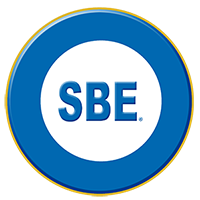On Dec. 4, 2015, the Federal Aviation Administration’s (FAA) released the Advisory Circular for Obstruction Marking and Lighting 70/7460-1L (AC 70/7460-1L), which cancels and replaces Advisory Circular 70/7460-1K. The release amends the lighting requirements applicable to towers that must be registered in the Commission’s Antenna Structure Registration (ASR) system. There has been some confusion about the change because unless a tower is within the glide slope of an airport or heliport and lower than 200 feet, no FAA authorization is required, and therefore no antenna structure registration. This new rule does not reduce the 200-foot limit to 150 feet and that is not clear from the FCC public notice.
Under FCC rules, each new or altered antenna structure subject to the antenna structure registration requirement must conform to the painting and lighting specifications set forth in the FAA’s final determination of “no hazard” and the associated FAA study for that particular structure. Additionally, the registration of such antenna structures must reflect the lighting specifications set in the No Hazard Determination. The FAA specifies marking and lighting for new and altered antenna structures based on the current version of AC 70/7460-1L. Therefore, going forward all new or altered antenna structures will follow AC 70/7460-1L.
The new advisory circular makes a number of changes that affect antenna structures. Most notably, Lighting Styles A, E, and F for antenna structures no longer employ L-810 steady-burning side lights for communications towers that are taller than 350 feet above ground level (AGL). As a result of this change, effective immediately all new communications towers taller than 350 feet AGL that use lighting may use only flashing obstruction lights.
In addition, for towers between 151 and 350 feet AGL, the new advisory circular requires flashing L-810 side lights, rather than steady L-810 side lights, for Lighting Styles A and E. This requirement will not take effect until Sept. 15, 2016, at which point all new communications towers taller than 150 feet AGL that use lighting may use only flashing obstruction lights. Note that this lighting change does not create any new tower registration requirements for towers below 200 feet AGL and are not within the prescribed glide slope for airports and heliports.

